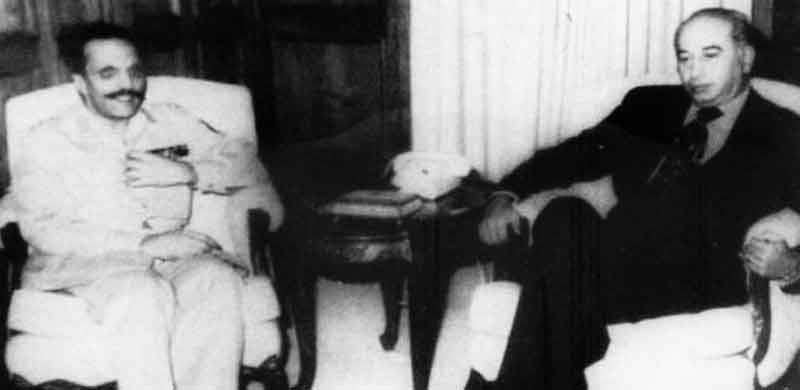
40 years ago today, Pakistan’s first elected PM ZA Bhutto was executed through a controversial trial. The Zia dictatorship was hell-bent on sending ZA Bhutto to the gallows. Initially it failed to find a suitable reason. The case that finally sent ZAB to his death was a last-ditch effort, writes Nadeem F. Paracha
Much has been written and said about what is perhaps the most controversial court case in Pakistan that left the country’s first elected Prime Minister, Zulfikar Ali Bhutto, dangling from the hangman’s rope in April 1979. Bhutto was accused by the dictatorship of General Ziaul Haq for ordering the murder of Ahmad Khan Kasuri (in 1974).
Kasuri was the father of dissident member of the then ruling PPP, Raza Kasuri. Raza was alleged to be the intended target of the Bhutto regime’s paramilitary Federal Security Force (FSF), which mistakenly killed his father.
Raza Kasuri was once a member of the left-wing National Awami Party (NAP). He joined the PPP before the 1970 election. He then went on to win a seat from Lahore on the party’s ticket. However, after the party came to power in December 1971, Raza became part of a small dissident group within the PPP in the National Assembly. In 1974 while he was returning from a wedding with his father, their car came under attack at a traffic signal.
Raza’s father was killed. The son lodged a police FIR against Prime Minister Bhutto, claiming that it was Bhutto who had ordered the attack. Bhutto did not try to stop the police from registering the FIR. Later, Raza entered the National Assembly with a bottle containing some of his father’s spilled blood. After the FIR, police investigations into the murder could not come up with any substantial evidence to link the Prime Minister with the killing.
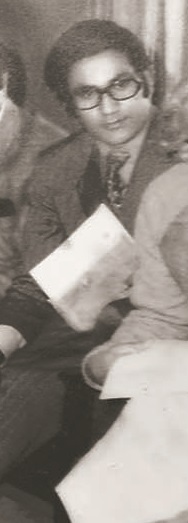
After the July 1977 coup, Zia was convinced that Bhutto needed to hang – especially after Bhutto had thundered that the constitutional punishment for treason was death. By this he meant those who had toppled his government. He said this at a huge rally that he held in Lahore when he was released after his first arrest by the military regime.
In his book, Leaving the Left Behind, veteran leftist leader and ideologue, Jamal Naqvi wrote that since Zia wanted to eliminate Bhutto right from the outset, he had first approached Baloch nationalist leader, Attaullah Mengal who had been persecuted and arrested by the Bhutto regime during the Balochistan insurgency between 1973 and 1977.
According to Naqvi, Zia met with Mengal soon after the Baloch leader’s release (ordered by Zia) and told him that he (Zia) could arrest Bhutto for murder if Mengal was willing to testify against the former prime minister and accuse him of ordering the disappearance and murder of Mengal’s 24-year-old son, Asad Mengal.
Asad Mengal had allegedly been picked up in 1974 by security forces from Karachi and was never seen again. Naqvi added that after hearing out Zia’s proposal, Mengal declined to testify and implicate his former tormentor on unsubstantiated charges.
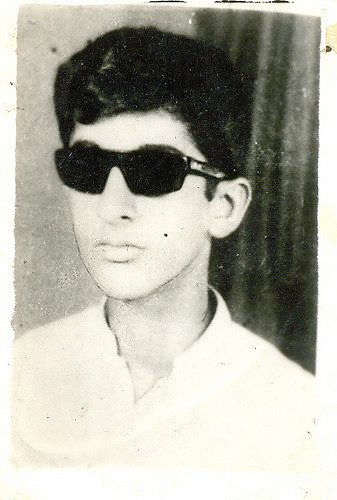
After he was unable to convince Mengal, Zia decided to implicate Bhutto for presiding over the break-up of Pakistan. He ordered his Information Ministry to conduct an interview with former military dictator, General Yahya Khan, for the state-owned Pakistan Television (PTV).
In his book, Uncensored, former General Manager of PTV’s Rawalpindi station, Burhanuddin Hassan, wrote that in August 1977, the Zia regime ordered PTV to conduct an interview with Yahya who was living a quiet life under house arrest ever since his fall from power in December 1971.
Zia wanted the interview to focus on the debacle that saw East Pakistan separate from the rest of Pakistan. Knowing that Yahya would put all the blame on Bhutto (who had worked closely with Yahya during the crises) Zia planned to then proceed and arrest Bhutto on the charges of treason and the break-up of Pakistan.
According to Hassan, Yahya was reluctant. He told Hassan that he had already said what he wanted to say about the East Pakistan debacle to the Hamoodur Rahman Commission that was set-up by the Bhutto regime to investigate East Pakistan’s separation.
But eventually, PTV was able to convince the former general. However, the former general suddenly fell ill and was unable to give the interview. Thus it was only after the Mengal and Yahya ploys had failed to provide the Zia regime a reason to entangle Bhutto in a serious case that the regime came up with the idea of digging out the old, dusty FIR of the Kasuri murder.
According to the 1989 book, Betrayals of Another Kind, by Lt. General Faiz Ali Chisti, it was the anti-Bhutto lawyer A.K. Brohi, and technocrat Sharifuddin Pirzada, who advised Zia to allow the reopening of a 1974 murder case registered against the former PM. Chisti had been one of the masterminds behind the 1977 coup. The FIR was dug out to jettison Bhutto’s demise after two earlier attempts to implicate him for committing ‘heinous crimes’ had failed.
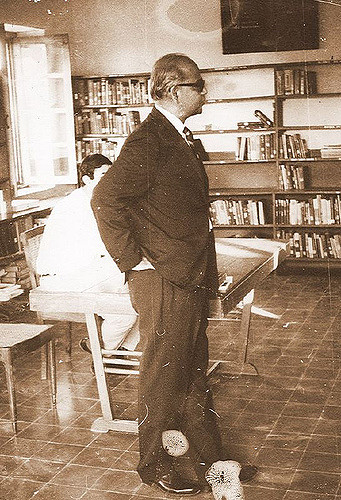
Yet, after being arrested on this charge, Bhutto was released when a judge, Justice KMA Samadani, found the evidence to be contradictory and incomplete. But in September 1977, the Zia government again arrested the ousted PM. This time the arrest was made on testimonies given by five members of the FSF, including its head, Masood Mahmoud.
Initially, Masood turned hostile against the prosecution and accused the police of ‘extracting false testimonies under torture.’ However, he soon became an approver and testified against Bhutto, claiming that Kasuri’s murder was ordered by Bhutto. Due to a deal that he had struck with the dictatorship, Masood was allowed to travel to the US. Interestingly, he received a US visa within days. He hasn’t been heard from since, even though many believe he is still residing in the US.
The FSF was formed by Bhutto in 1972. A police strike in Punjab left Bhutto feeling vulnerable as head of a country that had lost its eastern wing in 1971. According to one of his biographers, Stanley Wolpert, Bhutto saw ‘enemies’ everywhere. According to Wolpert, even though Bhutto had become president and the only civilian martial law administrator after Yahya’s resignation in December 1971, he was convinced that the military would eventually want to come back into power. So he decided to form his own paramilitary force which would directly report to him.
The FSF was made up of about 15,000 trained men who were given sophisticated weapons. FSF offices were open across the country. In a 1997 article for Dawn, the celebrated columnist, late Ardeshir Cowasjee wrote the FSF was mandated to look after the PM’s security and also counter any move by the military to topple the civilian regime. But it eventually became a tool for Bhutto to silence his opponents. These not only included members of the opposition parties and suspected Baloch insurgents, but also Bhutto’s critics within the PPP.
A former police officer, Haq Nawaz Tawana was made the first chief of the FSF. But he was soon replaced by Masood Mahmoud. Masood had begun his professional career in the Indian Police Service two years before the creation of Pakistan in 1947. After Partition, he became a citizen of Pakistan. He then got a degree in law from Lincoln’s Inn in London. According to Rafi Raza’s 1997 book on the Bhutto regime, Bhutto and Masood were good friends. They had first met at a bar in Karachi in the mid-1950s.
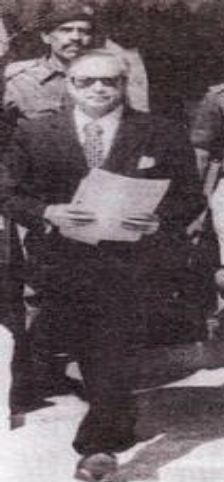
After Justice Samadani had ordered Bhutto’s release, the military regime again arrested him in September 1977. The case was then transferred from Samdani’s session’s court to the Lahore High Court (LHC). The trial ran for five months and was headed by a staunch anti-Bhutto judge, Maulvi Mushtaq. Chisti wrote that Mushtaq’s promotion to the Supreme Court had been stalled by Bhutto when he was in power. That is why Zia insisted that Justice Mushtaq hears the case.
On 18 March 1978, the LHC passed the death sentence on Bhutto. It gave him seven days to appeal against the verdict at the Supreme Court (SC). Bhutto’s wife, Nusrat, and daughter, Benazir, were under house arrest at the time.
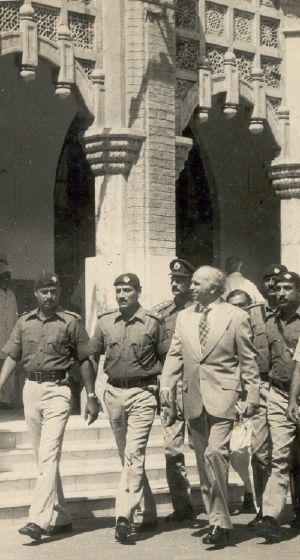
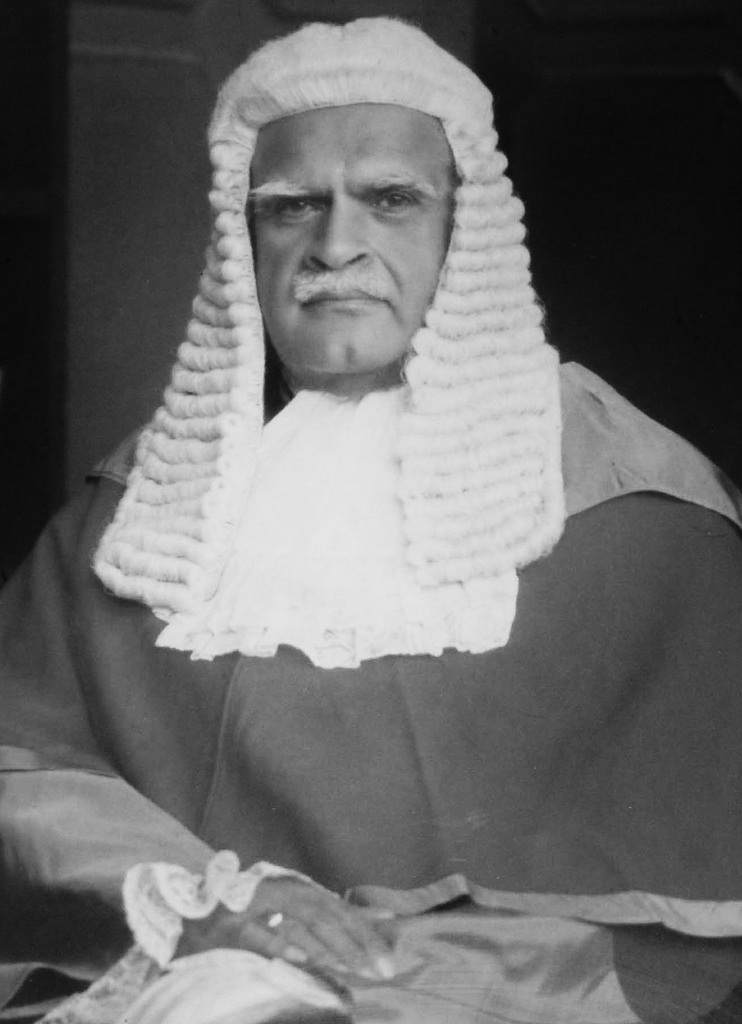
An appeal was filed by Bhutto’s lawyer to the SC. A SC panel of nine judges heard the appeal. The panel was headed by Chief Justice Anwar-ul-Haq. Justice Anwar had been elevated to the post of Chief Justice in September 1977 during the third month of Zia’s martial law. Through a verdict he had provided legal cover to Zia’s coup. Two judges on the panel were clearly not convinced by the LHC verdict. One of them was Justice Qaiser Khan who was to retire on July 31, 1978. Interestingly, Justice Anwar decided to stretch the hearing, as if waiting for Qaiser to retire.
The panel now had 8 judges. Another judge Justice Waheeduddin who was expected to rule against the verdict suddenly fell ill and could not attend the hearings. He asked that the Chief Justice delay the hearing till he was healthy enough to rejoin the panel. Anwar declined. The proceedings dragged on till February 1979. On 6 February 1979, Anwar announced that the SC had decided to reject the appeal and uphold the death verdict.
Despite Qaiser’s retirement and Waheeduddin’s illness, it was a divided judgment. Out of the remaining 7 judges, 4 upheld the verdict and 3 rejected it. According to the norms of practiced law, capital punishment cannot be delivered through a divided judgment. But in this case, it was.
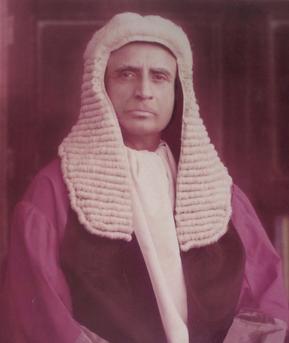
Enough evidence has been provided by various authors and legal experts on the controversial and lopsided nature of the LHC trial and SC hearing. Initially most of Zia’s advisers were of the view that the case would not hold in a court of law. But it actually went on to not only convict the former prime minister of murder, but also send him to the gallows.
Hein Kiessling in his 2016 book, Faith, Unity, Discipline: The ISI of Pakistan, wrote that after SC rejected Bhutto’s appeal, Zia asked the premier Pakistani intelligence agency to conduct a quick study to determine what would be the people’s reaction if Bhutto was to be hanged. Kiessling wrote that ISI advised Zia not to go ahead with the hanging. But Zia ignored the advice and gave the green signal for the former PM’s execution.
Bhutto was hanged early morning on April 4, 1979. Later, Tara Masih, his executioner recalled that Bhutto took a bath, shaved and had a cup of tea. Then shortly before his hanging, he put on his wedding ring. Bhutto’s body was quietly flown to his ancestral village in Ghari Khudabakhsh. Only a handful of men from the village were allowed to bury him. His wife and daughter were not allowed to attend his funeral.
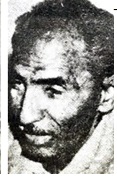
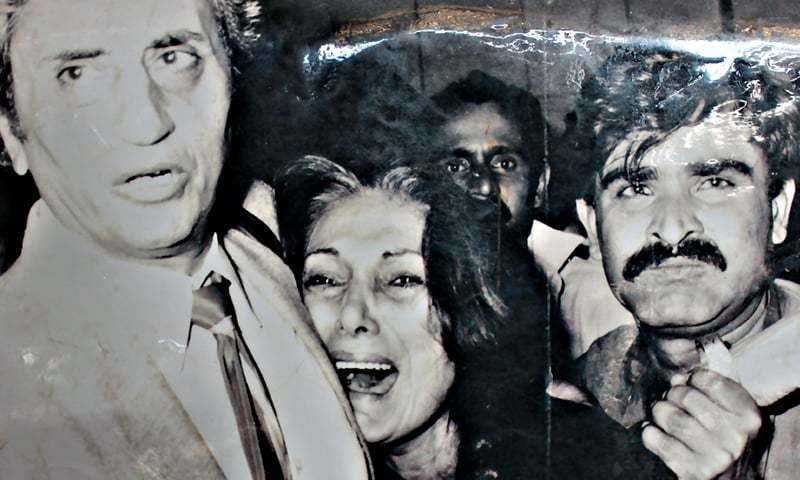
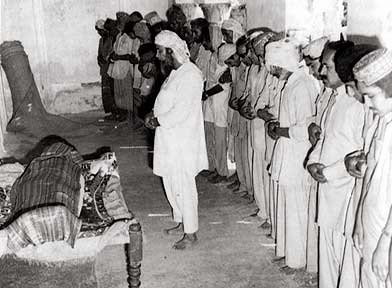
Much has been written and said about what is perhaps the most controversial court case in Pakistan that left the country’s first elected Prime Minister, Zulfikar Ali Bhutto, dangling from the hangman’s rope in April 1979. Bhutto was accused by the dictatorship of General Ziaul Haq for ordering the murder of Ahmad Khan Kasuri (in 1974).
Kasuri was the father of dissident member of the then ruling PPP, Raza Kasuri. Raza was alleged to be the intended target of the Bhutto regime’s paramilitary Federal Security Force (FSF), which mistakenly killed his father.
Raza Kasuri was once a member of the left-wing National Awami Party (NAP). He joined the PPP before the 1970 election. He then went on to win a seat from Lahore on the party’s ticket. However, after the party came to power in December 1971, Raza became part of a small dissident group within the PPP in the National Assembly. In 1974 while he was returning from a wedding with his father, their car came under attack at a traffic signal.
Raza’s father was killed. The son lodged a police FIR against Prime Minister Bhutto, claiming that it was Bhutto who had ordered the attack. Bhutto did not try to stop the police from registering the FIR. Later, Raza entered the National Assembly with a bottle containing some of his father’s spilled blood. After the FIR, police investigations into the murder could not come up with any substantial evidence to link the Prime Minister with the killing.

Raza Kasuri in the 1970s.
After the July 1977 coup, Zia was convinced that Bhutto needed to hang – especially after Bhutto had thundered that the constitutional punishment for treason was death. By this he meant those who had toppled his government. He said this at a huge rally that he held in Lahore when he was released after his first arrest by the military regime.
In his book, Leaving the Left Behind, veteran leftist leader and ideologue, Jamal Naqvi wrote that since Zia wanted to eliminate Bhutto right from the outset, he had first approached Baloch nationalist leader, Attaullah Mengal who had been persecuted and arrested by the Bhutto regime during the Balochistan insurgency between 1973 and 1977.
According to Naqvi, Zia met with Mengal soon after the Baloch leader’s release (ordered by Zia) and told him that he (Zia) could arrest Bhutto for murder if Mengal was willing to testify against the former prime minister and accuse him of ordering the disappearance and murder of Mengal’s 24-year-old son, Asad Mengal.
Asad Mengal had allegedly been picked up in 1974 by security forces from Karachi and was never seen again. Naqvi added that after hearing out Zia’s proposal, Mengal declined to testify and implicate his former tormentor on unsubstantiated charges.

Asad Mengal, son of Baloch nationalist, Attaullah Mengal.
After he was unable to convince Mengal, Zia decided to implicate Bhutto for presiding over the break-up of Pakistan. He ordered his Information Ministry to conduct an interview with former military dictator, General Yahya Khan, for the state-owned Pakistan Television (PTV).
In his book, Uncensored, former General Manager of PTV’s Rawalpindi station, Burhanuddin Hassan, wrote that in August 1977, the Zia regime ordered PTV to conduct an interview with Yahya who was living a quiet life under house arrest ever since his fall from power in December 1971.
Zia wanted the interview to focus on the debacle that saw East Pakistan separate from the rest of Pakistan. Knowing that Yahya would put all the blame on Bhutto (who had worked closely with Yahya during the crises) Zia planned to then proceed and arrest Bhutto on the charges of treason and the break-up of Pakistan.
According to Hassan, Yahya was reluctant. He told Hassan that he had already said what he wanted to say about the East Pakistan debacle to the Hamoodur Rahman Commission that was set-up by the Bhutto regime to investigate East Pakistan’s separation.
But eventually, PTV was able to convince the former general. However, the former general suddenly fell ill and was unable to give the interview. Thus it was only after the Mengal and Yahya ploys had failed to provide the Zia regime a reason to entangle Bhutto in a serious case that the regime came up with the idea of digging out the old, dusty FIR of the Kasuri murder.
According to the 1989 book, Betrayals of Another Kind, by Lt. General Faiz Ali Chisti, it was the anti-Bhutto lawyer A.K. Brohi, and technocrat Sharifuddin Pirzada, who advised Zia to allow the reopening of a 1974 murder case registered against the former PM. Chisti had been one of the masterminds behind the 1977 coup. The FIR was dug out to jettison Bhutto’s demise after two earlier attempts to implicate him for committing ‘heinous crimes’ had failed.

AK Brohi.
Yet, after being arrested on this charge, Bhutto was released when a judge, Justice KMA Samadani, found the evidence to be contradictory and incomplete. But in September 1977, the Zia government again arrested the ousted PM. This time the arrest was made on testimonies given by five members of the FSF, including its head, Masood Mahmoud.
Initially, Masood turned hostile against the prosecution and accused the police of ‘extracting false testimonies under torture.’ However, he soon became an approver and testified against Bhutto, claiming that Kasuri’s murder was ordered by Bhutto. Due to a deal that he had struck with the dictatorship, Masood was allowed to travel to the US. Interestingly, he received a US visa within days. He hasn’t been heard from since, even though many believe he is still residing in the US.
The FSF was formed by Bhutto in 1972. A police strike in Punjab left Bhutto feeling vulnerable as head of a country that had lost its eastern wing in 1971. According to one of his biographers, Stanley Wolpert, Bhutto saw ‘enemies’ everywhere. According to Wolpert, even though Bhutto had become president and the only civilian martial law administrator after Yahya’s resignation in December 1971, he was convinced that the military would eventually want to come back into power. So he decided to form his own paramilitary force which would directly report to him.
The FSF was made up of about 15,000 trained men who were given sophisticated weapons. FSF offices were open across the country. In a 1997 article for Dawn, the celebrated columnist, late Ardeshir Cowasjee wrote the FSF was mandated to look after the PM’s security and also counter any move by the military to topple the civilian regime. But it eventually became a tool for Bhutto to silence his opponents. These not only included members of the opposition parties and suspected Baloch insurgents, but also Bhutto’s critics within the PPP.
A former police officer, Haq Nawaz Tawana was made the first chief of the FSF. But he was soon replaced by Masood Mahmoud. Masood had begun his professional career in the Indian Police Service two years before the creation of Pakistan in 1947. After Partition, he became a citizen of Pakistan. He then got a degree in law from Lincoln’s Inn in London. According to Rafi Raza’s 1997 book on the Bhutto regime, Bhutto and Masood were good friends. They had first met at a bar in Karachi in the mid-1950s.

Masood Mahmoud.
After Justice Samadani had ordered Bhutto’s release, the military regime again arrested him in September 1977. The case was then transferred from Samdani’s session’s court to the Lahore High Court (LHC). The trial ran for five months and was headed by a staunch anti-Bhutto judge, Maulvi Mushtaq. Chisti wrote that Mushtaq’s promotion to the Supreme Court had been stalled by Bhutto when he was in power. That is why Zia insisted that Justice Mushtaq hears the case.
On 18 March 1978, the LHC passed the death sentence on Bhutto. It gave him seven days to appeal against the verdict at the Supreme Court (SC). Bhutto’s wife, Nusrat, and daughter, Benazir, were under house arrest at the time.

ZA Bhutto outside the LHC.

Justice Moulvi Mushtaq.
An appeal was filed by Bhutto’s lawyer to the SC. A SC panel of nine judges heard the appeal. The panel was headed by Chief Justice Anwar-ul-Haq. Justice Anwar had been elevated to the post of Chief Justice in September 1977 during the third month of Zia’s martial law. Through a verdict he had provided legal cover to Zia’s coup. Two judges on the panel were clearly not convinced by the LHC verdict. One of them was Justice Qaiser Khan who was to retire on July 31, 1978. Interestingly, Justice Anwar decided to stretch the hearing, as if waiting for Qaiser to retire.
The panel now had 8 judges. Another judge Justice Waheeduddin who was expected to rule against the verdict suddenly fell ill and could not attend the hearings. He asked that the Chief Justice delay the hearing till he was healthy enough to rejoin the panel. Anwar declined. The proceedings dragged on till February 1979. On 6 February 1979, Anwar announced that the SC had decided to reject the appeal and uphold the death verdict.
Despite Qaiser’s retirement and Waheeduddin’s illness, it was a divided judgment. Out of the remaining 7 judges, 4 upheld the verdict and 3 rejected it. According to the norms of practiced law, capital punishment cannot be delivered through a divided judgment. But in this case, it was.

Justice Anwar-ul-Haq.
Enough evidence has been provided by various authors and legal experts on the controversial and lopsided nature of the LHC trial and SC hearing. Initially most of Zia’s advisers were of the view that the case would not hold in a court of law. But it actually went on to not only convict the former prime minister of murder, but also send him to the gallows.
Hein Kiessling in his 2016 book, Faith, Unity, Discipline: The ISI of Pakistan, wrote that after SC rejected Bhutto’s appeal, Zia asked the premier Pakistani intelligence agency to conduct a quick study to determine what would be the people’s reaction if Bhutto was to be hanged. Kiessling wrote that ISI advised Zia not to go ahead with the hanging. But Zia ignored the advice and gave the green signal for the former PM’s execution.
Bhutto was hanged early morning on April 4, 1979. Later, Tara Masih, his executioner recalled that Bhutto took a bath, shaved and had a cup of tea. Then shortly before his hanging, he put on his wedding ring. Bhutto’s body was quietly flown to his ancestral village in Ghari Khudabakhsh. Only a handful of men from the village were allowed to bury him. His wife and daughter were not allowed to attend his funeral.

Tara Masih

Bhutto’s widow, Nusrat, bursts into tears after hearing about her husband’s execution.

Only a handful of villagers were allowed to attend Bhutto’s funeral.
